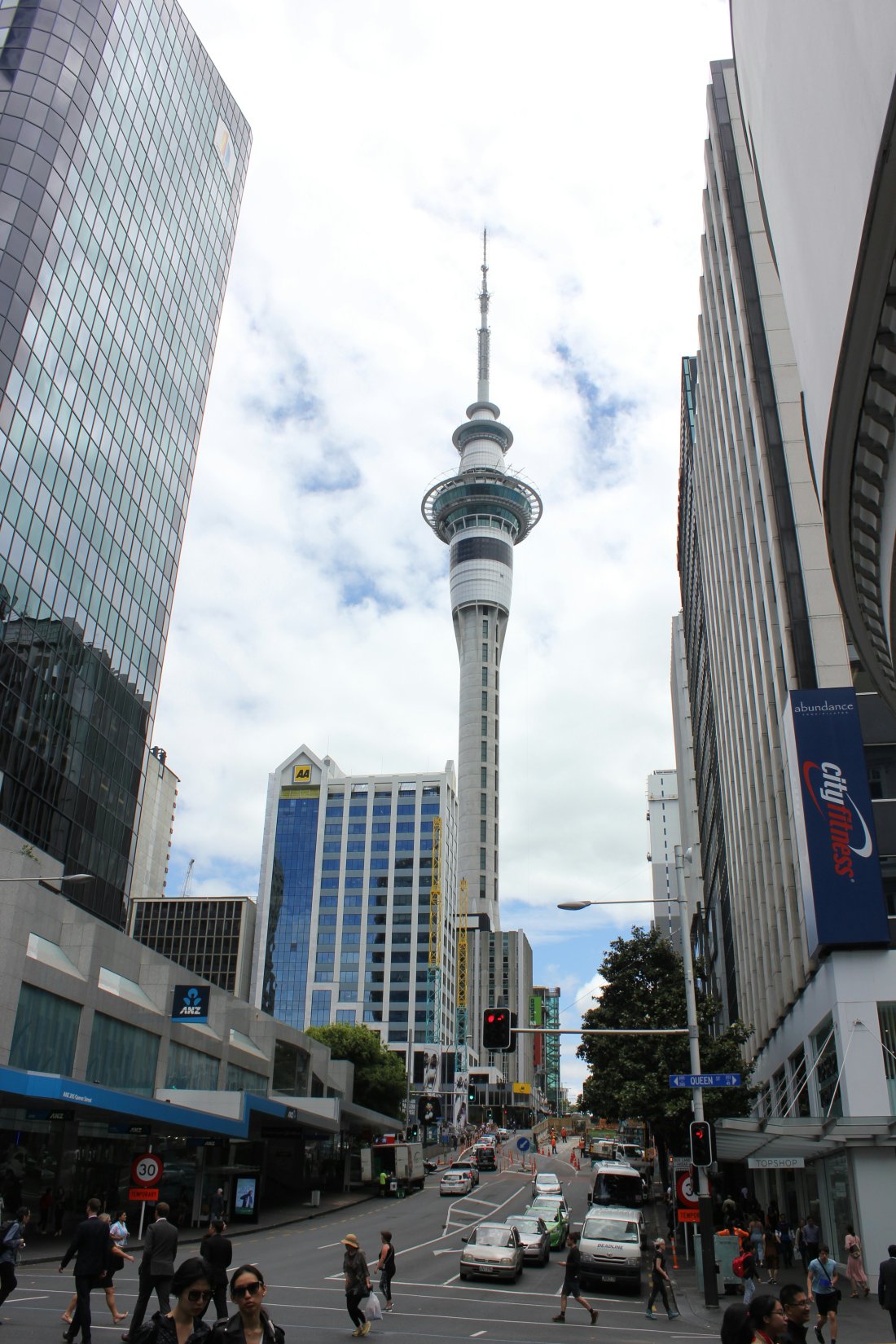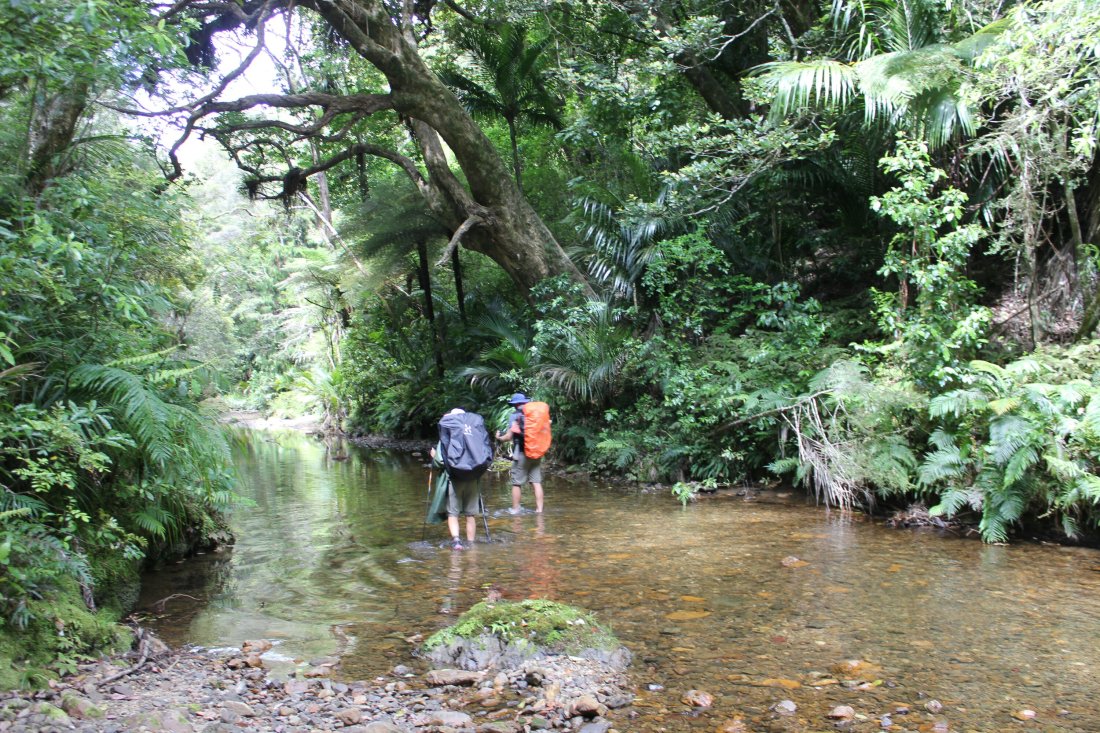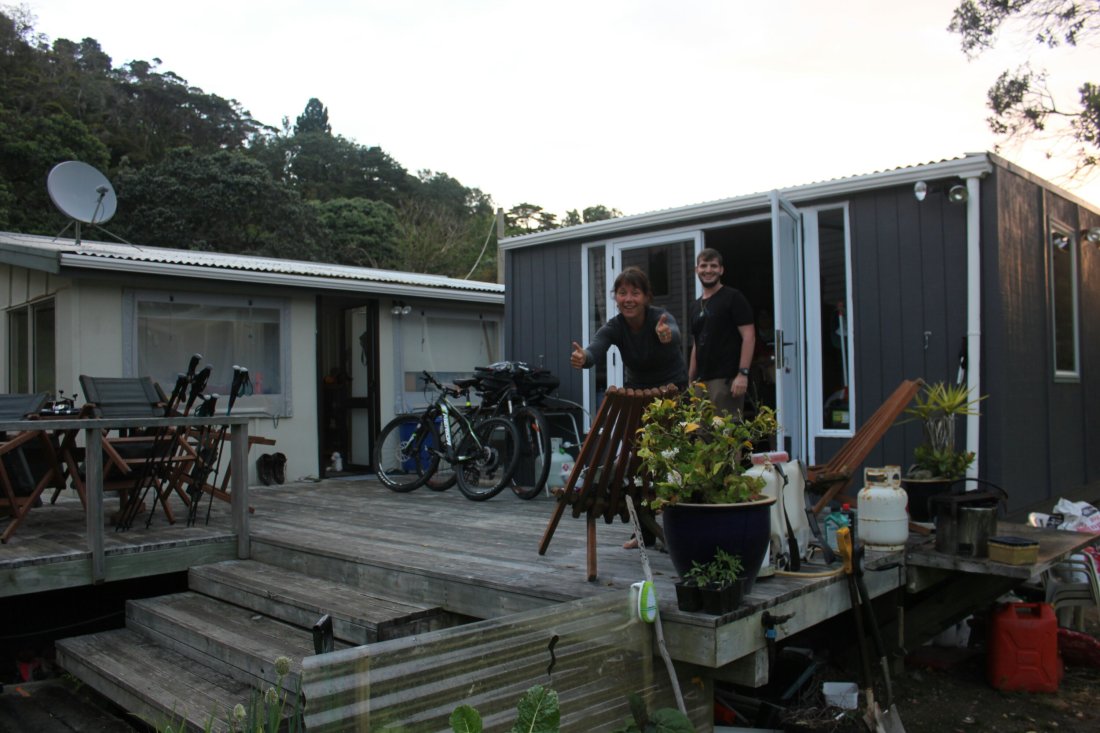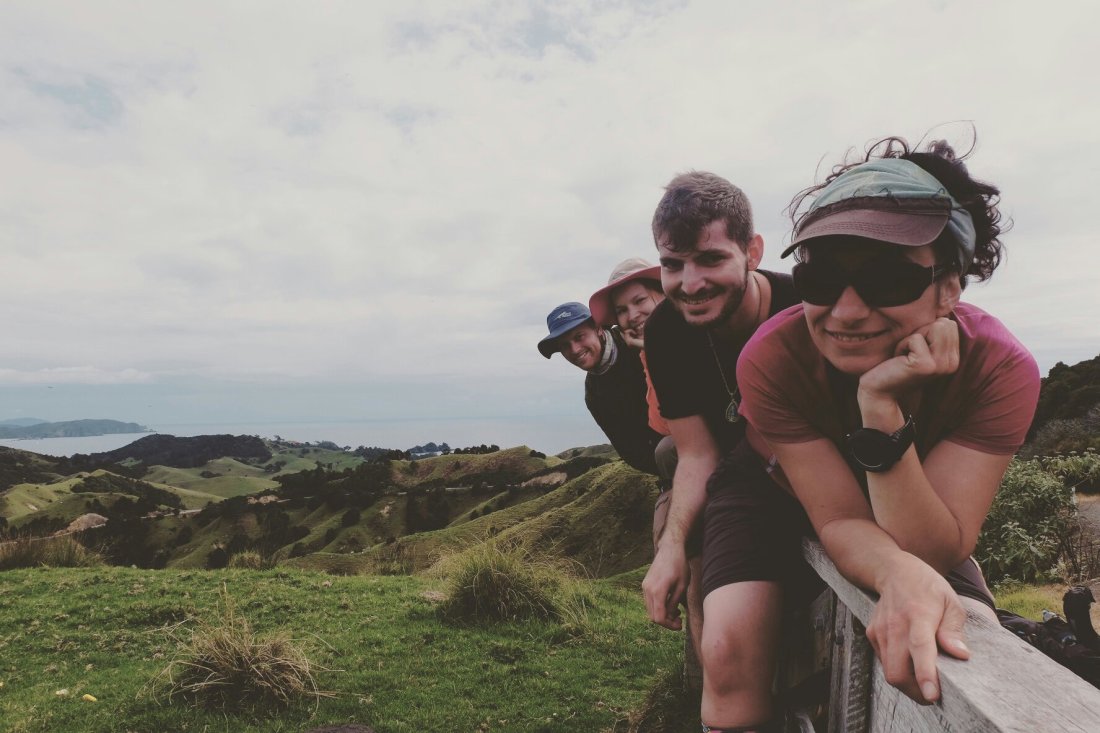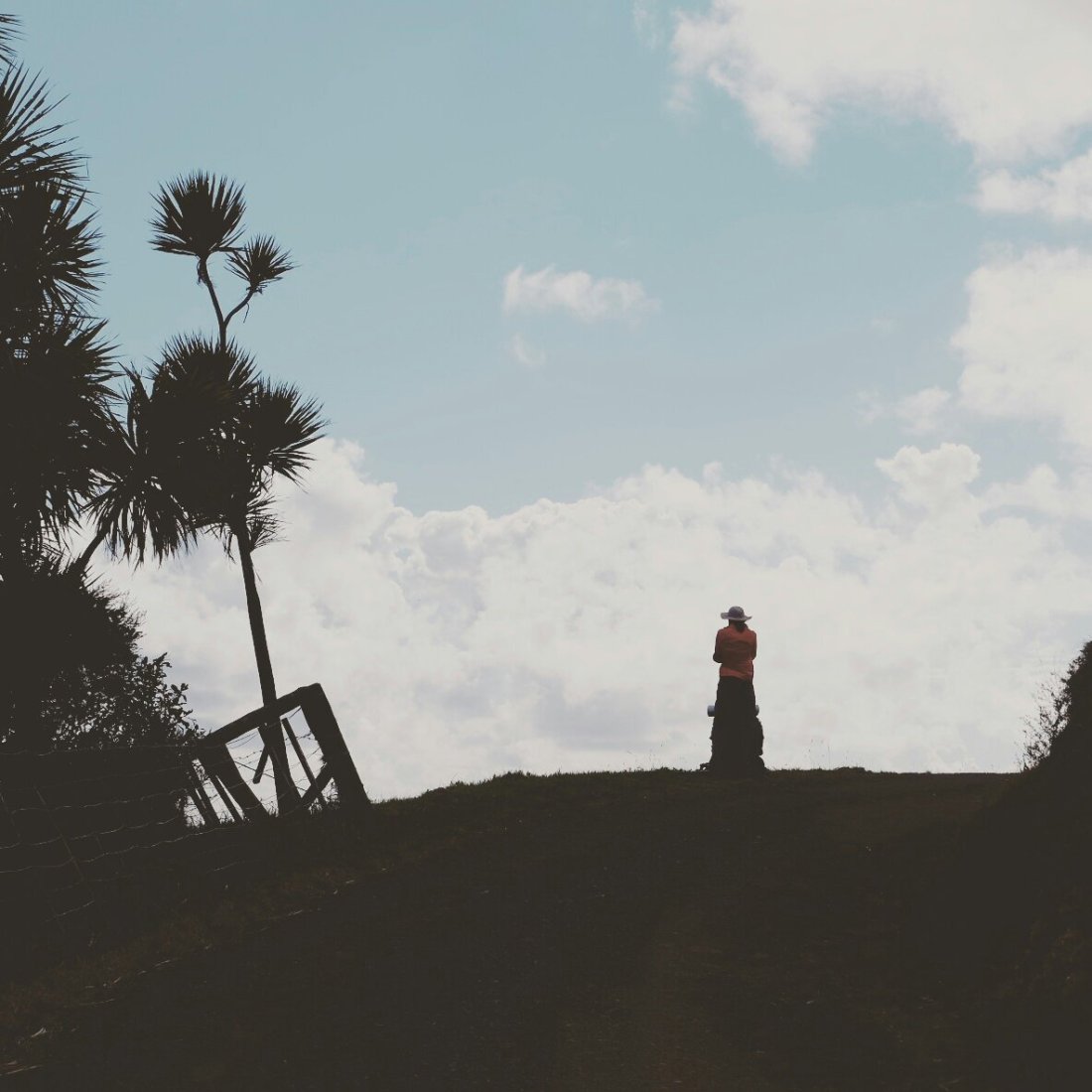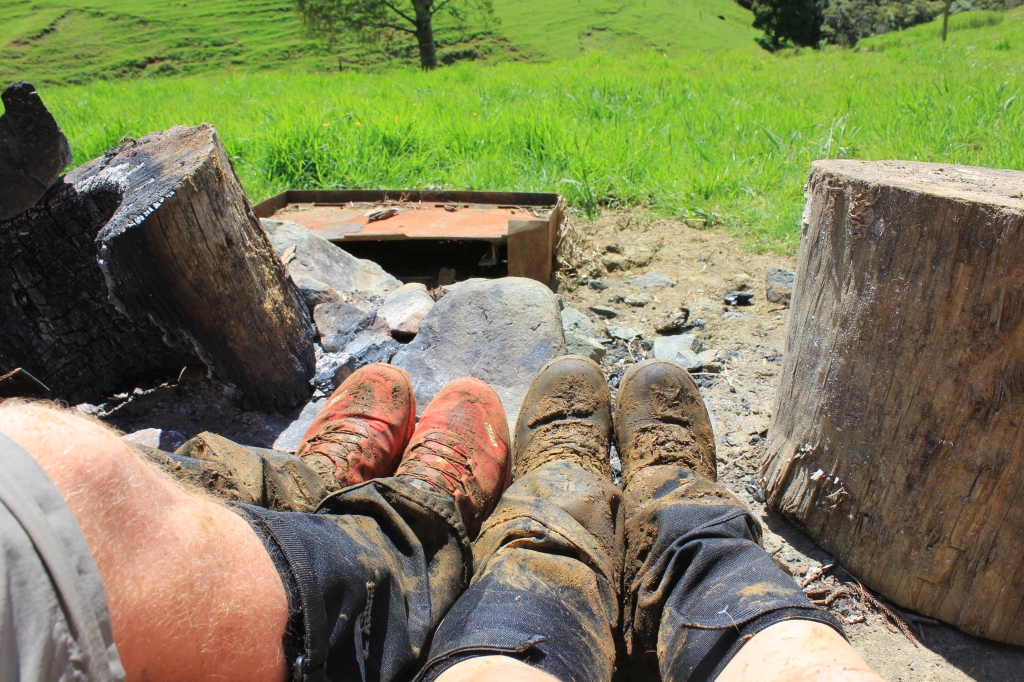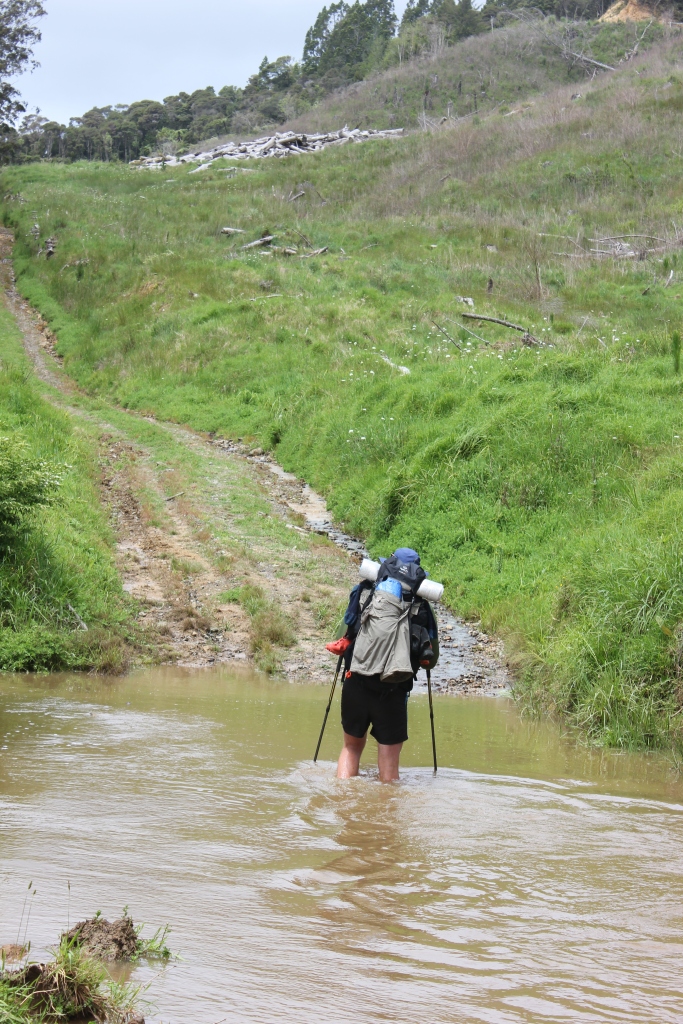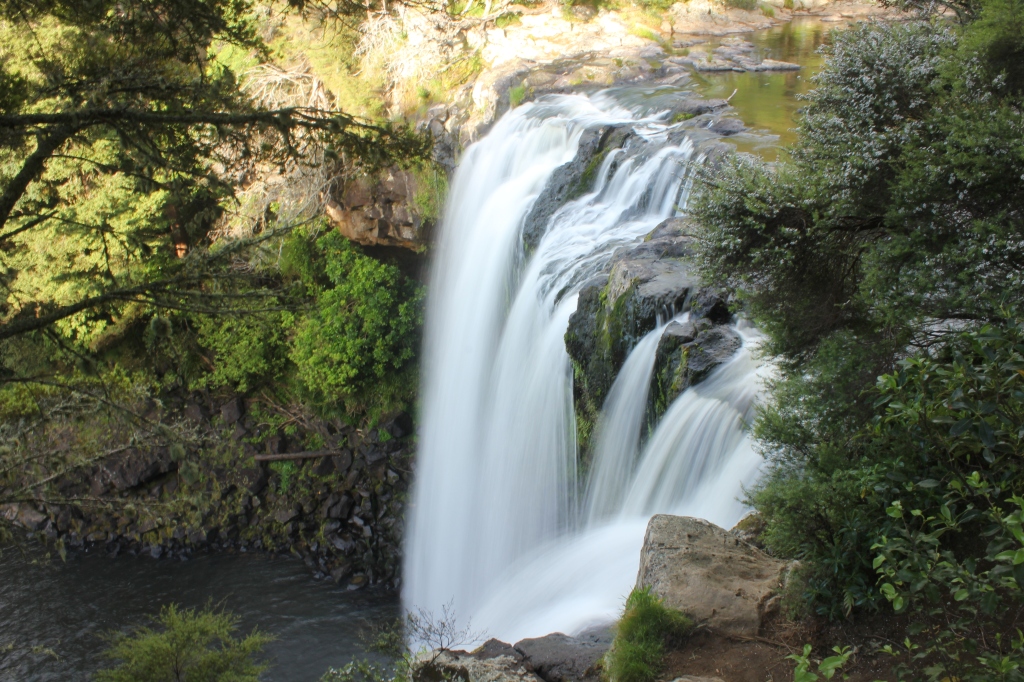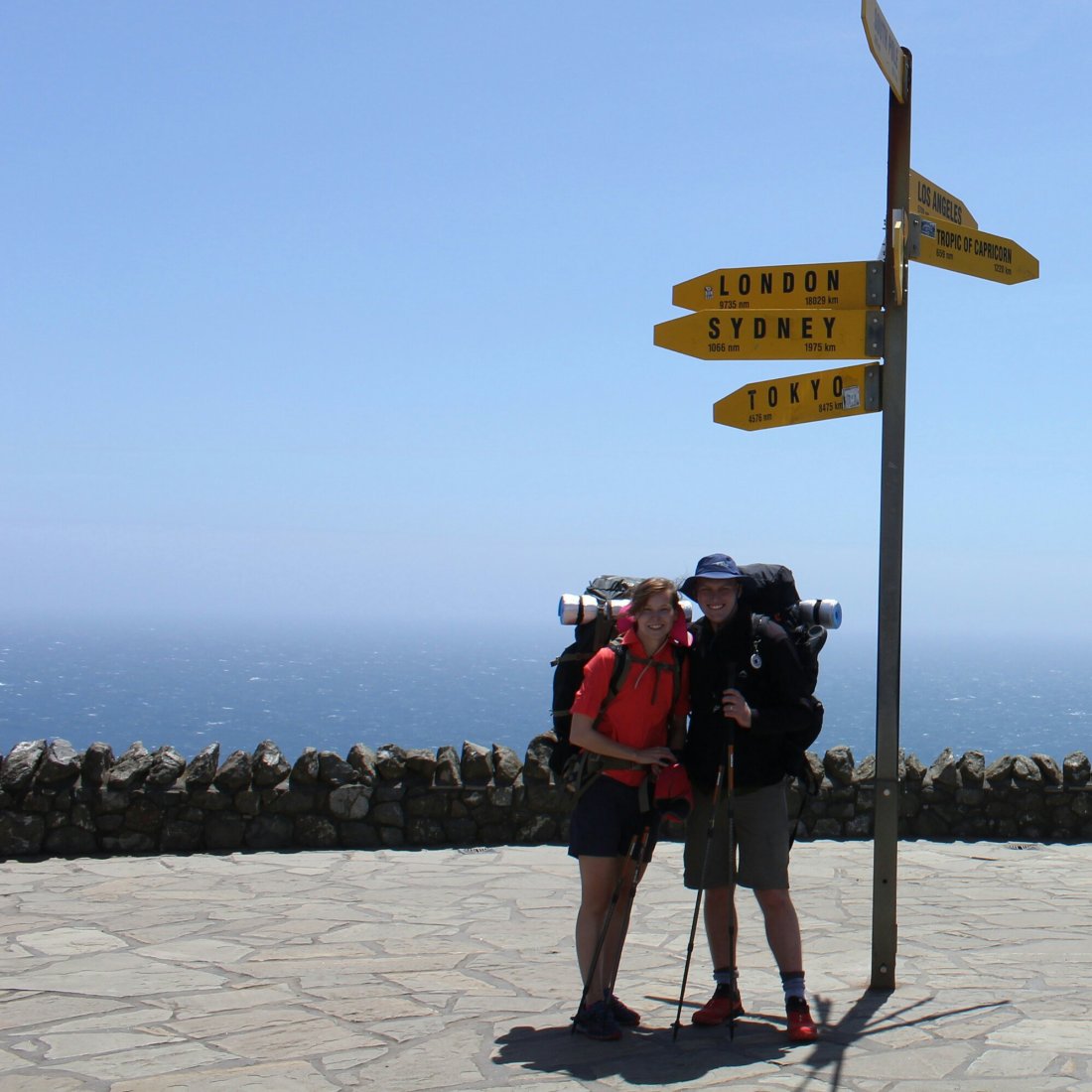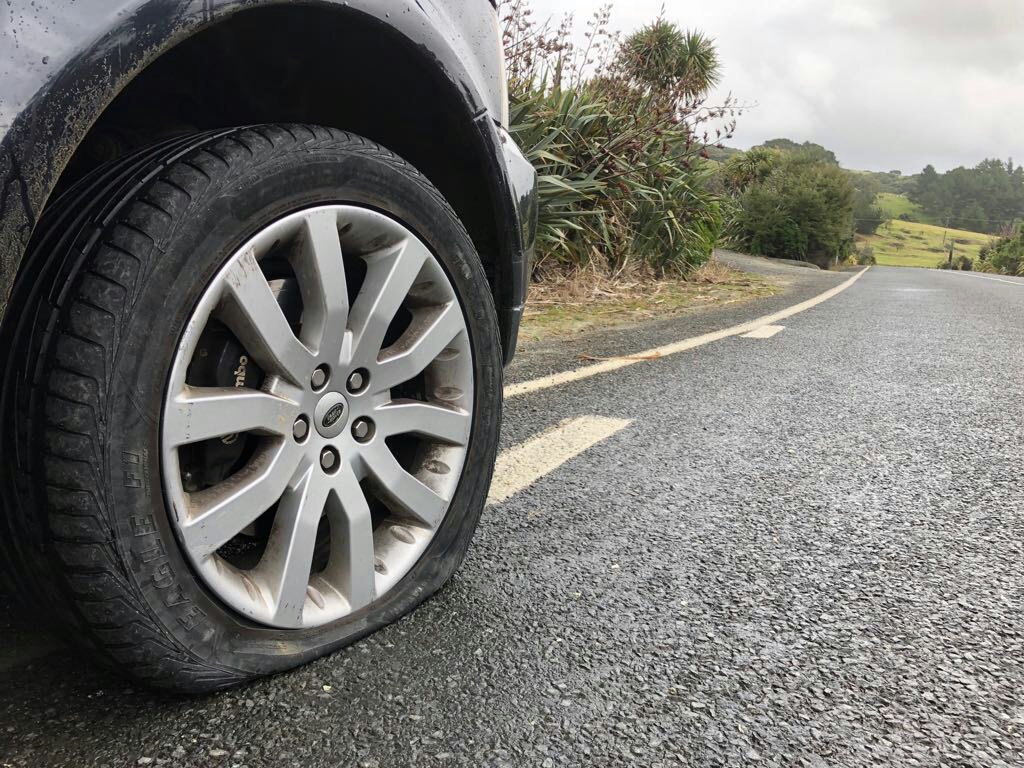The past week has consisted of so diverse experiences that it is almost impossible to write it down in a single post – but let’s try!
The morning we greeted the gorgeous Whangarei, we kept our promise and went to look for Peter (the sailor from the car ferry) and his boat in the marine basin. We were lucky to find him, his family and his boat, the Arcadian, that had seen many seas.
He offered us and our Israeli friend, Noam, a cup of coffee on the boat deck where we chatted about how life can take you to so different directions.
He shared his story and told how first others may question your lifestyle but at the end the ones who follow their heart will surely be happy. That was an inspiring morning – not everyone thinks that going on a tramp like this is the ‘thing’ to do on their to-do list.
From Whangarei we continued our trail to Marsden Point to do some more beach tramp. On the beach, we walked pass a huge gas tanker and chatted to a friendly fisherman.



Once we got to a stream crossing, we were happy to see our fellow hiker, Ines, taking an afternoon break on the beach. We had not seen other hikers for several days and we were delighted (and reliefed) to be reminded we are not tramping alone. As it was Ines’ last night before taking a work break from the trail, we had a stopover at Uretiti campsite and had a lovely evening together.
We went swimming in the ocean, cooked together and chatted to fellow campers who were amazed by our hike. They provided us with hot water and cookies. That night we had our first possum visit to the tent going through our trash and taking its share of our leftover dinner.

The following morning we hiked together to a small village Waipu where we greeted Ines and continued to a short forestry section. That day hiking was not as inspiring and euphoric as it sometimes can get – the road walking made us tired, bored and the sun was hitting us from all sides. Perhaps also our first hot summer day.
Despite a few ride offers, we sticked to the inch-for-inch philosophy and continued walking. It’s part of the journey to be struck by boredom and have not so good hiking days too. As usual we meet and chat to many locals, this time a kiwi busy at a building site. He picked up the South African accent and asked if we are in NZ to learn to play rugby. Even on your lowest days the kiwi humour can give some light.
We approached the end of a long hiking day and wanted to finish off the first forest section after the beach. A local who gave us water told us about a good camping spot on the peak of the hills. We eventually found it with a spectacular 360 panoramic view over the coast and forest. Later we had some more company to share the view with, Jenny (Kiwi) and Debbie (Germany) came past which made the evening even better.
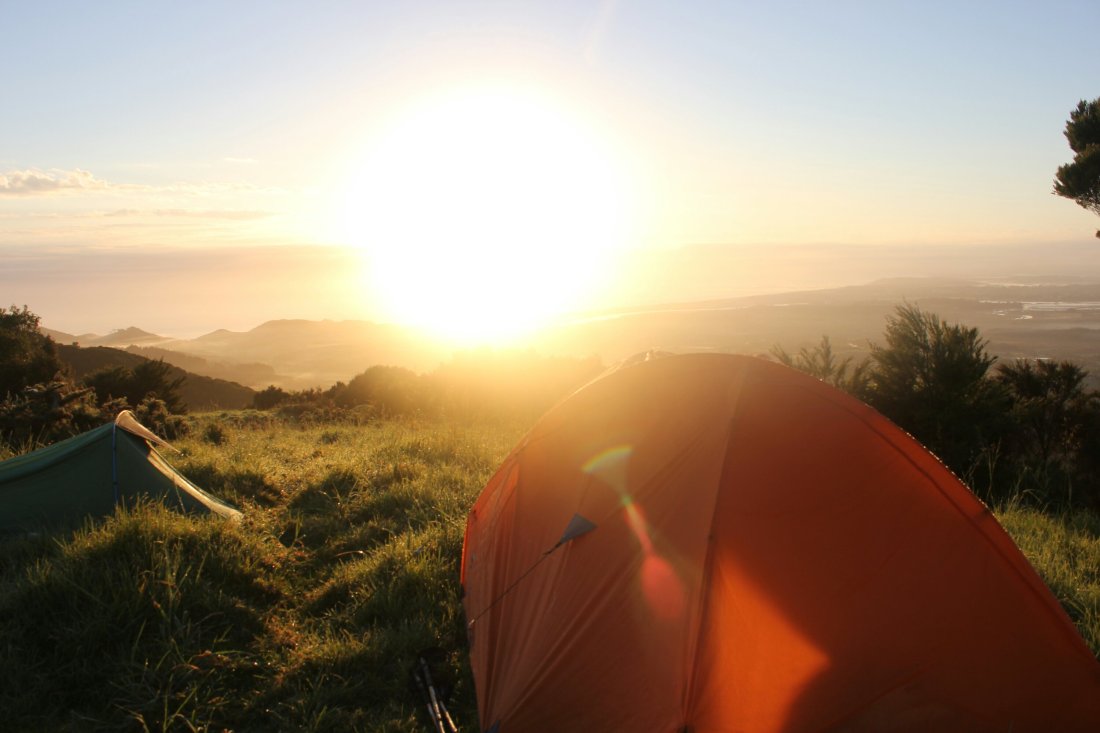


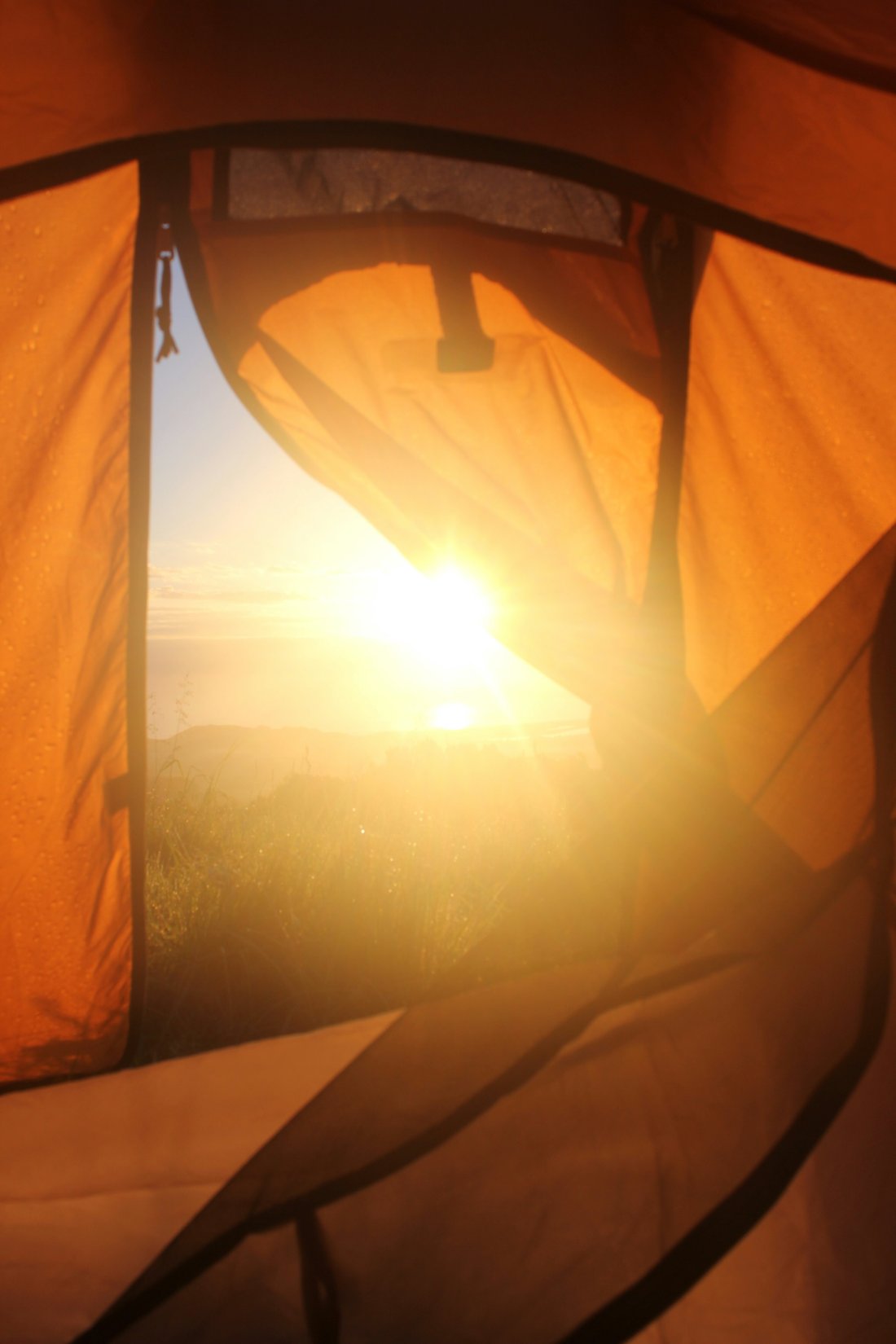
One of the most amazing things on the trail is that you never know what you wake up to. The morning provided us with a magical sunrise over the ocean which motivated us to stroll down towards the Mangawhai Heads. The trail went through a sheep farm that led us to the magnificent Mangawhai cliffs and onto the beach. Mangawhai reminded us a lot of Whangarei, lots of bays, islands in the distance, holiday homes and sailing boats. Even though we were tempted to stay the night we decided to carry on, well first we made a pit-stop for fish and chips (probably the most traditional NZ food). On the trail eating something other than pasta, noodles or oats is such a treat.
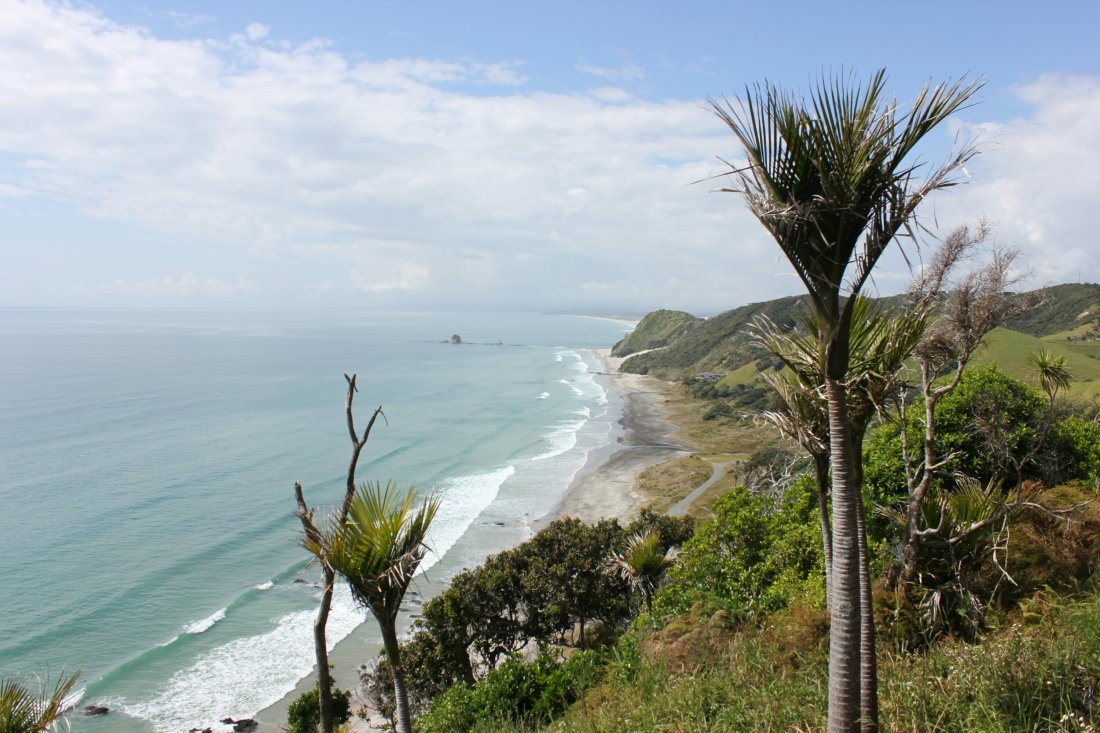
We continued on with the trail aiming to bush camp on the beach. The dunes next to the beach were however covered with endangered birds that forced us to continue even further than originally planned. We reached the beutiful Te Arai point just in time to still take a swim before contemplating where our home will be for the night. After cooking supper on the most luxurious picnic bench (it was just a normal bench, but trail gold) we saw a hiker approaching in the distance. To all our surprise it was our Israeli friend, Noam that we had left in Whangarei a couple of days before. It was great to be with another hiker again, for the next section was not going to be easy.


We started with an early morning hike aross the point and continuing on the beach to Pakiri. A long break at the end of the beach holiday park made us meet another Aussie and German hiker. Again we had a real NZ summer afternoon with the UV-index hitting the roof and burning (tanning in Hannele’s case) any exposed skin. To our surprise lied a steep climb to start the Omaha forest. It kicked our asses all the way through the forest on the same day, unfortunately keeping Noam for the night in the forest. We managed to make it out before sunset and overnight at the Manaka Outback. The next morning we got Noam just entering the next forest and found out that our Aussie friend, Dylan, slept only 4km behind us in the forest. He had made some good ground catching up to us after Paihia.
An easier forest with a couple of fake summits and a wild pig in the path made for an interesting tramping day. We got out of the forest at the Dome Cafe next to State Highway 1 with some chips and milkshakes. We met some more fellow hikers that we camped with for the night. One of the hikers was actually a runner. Curly, a kiwi ultra runner that is running the trail with the hopes to set a new FKT (Fastest Known Time) of 85 days, being unsupported. It was a great evening after 2 tough days in the muddy forests.


From there on, we hiked together on much easier terrain, mostly consisting of forestry tracks. Another highlight was a stop to a local cheese shop where we had lunch before greeting more hikers who were going to take a rest day north of Auckland. We finally reached Puhoi and decided to continue further.
Before reaching Auckland city, the trail takes you through several tremendous and magnificent pacific coastal walks. There was however one river crossing in Okura still in our way, the first “proper” crossing with hikers warning it being the deepest and most dangerous (supposedly some videos on youtube, we haven’t looked it). We managed to start early in the morning from Stillwater (a campsite that is free to TA walkers, because the owner loves what we are doing) to catch the low tide. The river seemed deep despite the low tide. With two of our friends still following we decided to head upstream to look for the best possible place to cross. Here we met a local man taking people over with a small boat, he said that it was the best spot to cross further away from the ocean and offered us a lift. Another Peter, told us about the effects that property development is having on the area with Auckland city expanding too rapidly. On the other side of the river is the latest land that is to be developed into a high density neighborhood. The community has been having fundraisers to try and fight the developers. With some success they are waiting for final judgement. A sad thing is that the Te Araroa trust has apparently been supporting this development as better paths in the area are being promised. After spending the next couple of days walking through neighborhoods we realised that muddy forest tracks are perhaps better than a sidewalk. Let’s hope the TA trust keep by their values.

Finally we could see the skyline of Auckland city and the skytower in the distance – we made it, the first 600km tramped!
We had a zero-day today and walked through the city. It feels strange to see so many people and the busy city life. Definitely not the most comfortable experience after all the bush life. For a moment we were missing those muddy forests.
However, for now we have a chance to rest, explore Auckland a bit, before hitting the trail again – where else but south! Keep well!
-H&F
